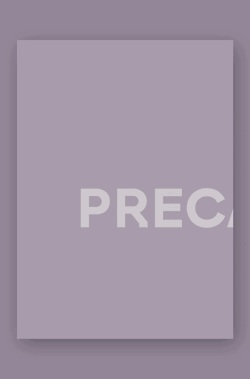Specific neutrality. A manifesto for new collective housing
May 27, 2008
Article written by Atelier Kempe Thill
This article describes some of the new effects in mass housing with the intention to give a new outlook towards housing. The article is based on demographic research during 2001 in our office. Furthermore most of the ideas and conclusions relate to work on 10 housing competitions between 1998-2002 and our building experience on various housing projects in the Netherlands. The text is illustrated by 4 projects produced by our office.
Problem. Mass housing
Mass housing is in crisis. After a hopeful beginning at the end of the forties with projects like the Lakeshore Drive Apartments by Mies van der Rohe and the Unité d’Habitation by Le Corbusier, collective housing became in the sixties, a strictly utilitarian model to create cheap houses for the masses. After that period, collective housing got the stigma of housing for the poor that today still exists and subconsciously defines our view. The reason is complex but we believe that architects can change this situation or at least can make new suggestions. We believe there is real work to do.
In the future there will be a change of paradigm’s related to collective housing. Collective housing will make an emancipation process from a mass oriented, mainly social and standard architecture towards a customer orientated, flexible and individual architecture. This can be a real alternative to suburban living.
This change can have enormous consequences for urban developments and can give new identity to the concept of density.
Demographic revolution. The new city inhabitant
Within the next 20 years there will be an increased demand for urban housing. Looking at current demographics, there will be two waves that will change the western population. One wave of elderly and one wave of foreigners. These demographic changes will blow up the structure of society. The middle class disappears and with her the classical nuclear family of the 20th century. Society will split up in many of new and big subgroups, singles, dinkies (double income no kids), one-parent-families and elderly people of various ethnic and cultural backgrounds. All of these groups will have their own expectations regarding their home but surprisingly almost all of them prefer, an urban environment and an apartment. Qualities such as public infrastructure, services, cultural network and comfort for disabled become a reason to choose an urban life style rather than the suburban model.
On the other hand, society, especially in North Europe and the USA, are becoming more and more dynamic. People often change their job and with it their living environment. The time to live in one house goes down towards 3-5 years. People no longer have strong relations with the place and the neighbourhood they live in. The house becomes an economical speculation object that is part of the economical carrier; there is a special word in Dutch called woonkarriere (living career) which describes the step-by-step career of their own living environment.
1. Neutrality: houses by metre
Casco
No longer do we know for whom we are building. There is no general life style or a clear social pattern anymore. Houses must be flexible so that they become attractive for different groups which equally increases their market value. To sell houses by the meter is the ultimate dream of every project developer.
Building in the future must be flexible in two ways: On the one hand, flexible during the design process. The fast changing global economy and the relatively long time to develop a collective housing project (in Holland about 5 years), one always faces a new economic situation during the process and the design should be able to react to it. On the other hand, flexible over the years of use.
The possibility to change partition walls, toilets and bathroom units and to change the program (from housing to office) will become an important design item for every collective housing project. That’s why a good apartment is a big neutral space that can be extended. A big neutral space can perfectly cover almost all spatial wishes. The living zone and access zone should be separated from each other. The access zone in the form of a corridor or a gallery should stimulate flexibility.
Housing = Office
This change towards flexibility and neutrality makes new construction methods necessary. Load bearing outside walls can offer total freedom inside. Skeleton systems in steel, concrete or timber offer flexibility in two directions and are more useful than systems based on constructive partition walls (like the Dutch tunnel system). To create more flexibility the floor system becomes a very important item. Sandwich floors allow the integration of all ductwork and can therefore offer flexibility for toilets and bathrooms. This way of making collective buildings as they were office buildings becomes in fact the new Leitbild. The consequence is that housing and office typology become more or less the same. The effect is that houses can be offices, which has a lot to do with realities of work in the future and has a positive effect on the urban environment.
Hospitalisation
The new wave of the elderly has enormous consequences for the society. In the future 50% of all house owners will be older than 55 years. Now in Holland already a very strong lobby with a lot of influence on planning procedures has created a network of new building regulations related to the problem of an over-aged population. A few examples: The postman should be able to come in a wheel chair, every corridor becomes 1.20 m, next to the handicapped ramp you have to make a stair (because there are people that can not walk on ramps).
Hospitalisation is the new phenomenon, in fact everybody will be declared handicapped and the western society will decide to live together in a hotel’dieu.
All collective housing projects in the future will get “the old people label” because it is the smallest common denominator: lift, living just on one floor, and no thresholds. That means that the Le Corbusier housing concepts are gone: no void, no maisonette, no promenade architectural. Mies is the future. The logical consequence is to design a solid structure with a good flexible facade and a large empty space that is independent from the exterior.
2. The apartment: private landscapes
Size
The nuclear family has disappeared and with her the standard organisation of an apartment. Residences become bigger and bigger because of the enormous growth of welfare in the last decades. In Holland the average living surface per person is now almost 50 m2, but the number of people has decreased per apartment. The average population of a Dutch household is now 2.2 people and will decrease. For the organisation of an apartment this means two things. Firstly, there is less privacy necessary, secondly, the living room becomes larger, as there is no need for more sleeping rooms or extra and bigger bathroom units.
Minimalism
The history of architecture over the last 100 years has been a history of reducing and saving. Around 1900 the ornament was not affordable anymore, the 1920’s all detailing based on traditional craftsmanship had to be reduced for economical reasons and in the 1980’s wall paper and carpets were not cost effective in mass housing. Now housing, at least in Holland, has reached the point that there is almost nothing that can be regarded as unnecessary. The interior is reduced and standardised to such a degree that there is simply no work for architects to do. In the well-published Dutch housing architecture there are no interior photos because they are all the same. All apartments have the same cheap stairs, walls, doors, etc., no matter if it is luxury or social housing.
Developers think that the job of an architect is to organise the floor plan according to the building rules and to design the facade. And they are right. Because of the global economy this is a very logical process. Labour is expensive in the western world that’s why it is reduced to a minimum. The next step will be that the interior as such will completely disappear. The apartment becomes a single empty room without anything except a cable shaft and a meter.
The inhabitants become selfbuilders that create their own living environment according to taste and budget. The Ikea concept is extended towards the complete interior.
Loft
The new typology of the 21st century is the loft. Sixty years after the shock of the Farnsworth house this became the most desired typology. This trend is underlined by a flood of publications (Berlin, Amsterdam, London, New York-Loft) But what is it? We think the loft is more an enclosed outside space than a classical room. It is a platonic internal landscape, a piece of emptiness in the city. Its success is on one hand a sign of a more personal and individualised way of living. On the other, it is a reaction to the decay of urban communities and public space. In the loft you can create your own paradise and cut all relations with the public sphere to a minimum, with the new media people are well connected and can find and receive almost anything they wish. The loft is a mix of public and private; it can be home, office or both. In former times people went on the street now they prefer to stay at home.
Towards a northern housing type Nowadays, especially in northern European countries, there are very hard rules concerning climate, energy saving and noise.
With limited resources and the growing consciousness for health this will become in the future a global trend. For housing projects this gives two problems: Insulation: Because of the wish to reduce heat loss apartment, buildings become more and more compact and the depth of the houses becomes bigger. Noise: Because of the noise problems on almost all urban locations apartment buildings have to be heavily protected against noise pollution. This can be done by double skin facades or mechanical ventilation.
The consequence of these two effects is that the house becomes a climatic and acoustic closed box that is just visually open. Technically this means that building is not simple anymore because the houses are built out of several layers. The interiors are more and more artificially ventilated bringing them closer to office buildings. The sick building syndrome now for the first time appears in housing projects.
We think that the described phenomena do not just create problems but can also have enormous potential. They give the possibility to build houses that are made out of different layers. By doing so the house can be divided into an insulating and a climate layer (pullover and rain jacket). A climate buffer can be created that can be used over the seasons and adds a spatial dimension to the house.
From m2 to m3
Traditional project developers in Holland still describe the qualities of a house in square metres and the amount of sleeping rooms. But more and more the experienced buyer, busy with “living career”, knows better and looks instead for the square metres or the cubic metres. This describes more about the possibilities and potential of a house, rather than the offered qualities. Within a given envelope people can create their own paradise. This phenomenon can also be a possibility for collective housing projects to create more individuality and freedom.
By separating a housing project in structure and infill, an enormous amount of typologies can be offered from one basic structure. People can build their house in a house.
3. Positive ghetto = new collectivity
Gated communities
In a global mass society people look almost in panic for identity. A major factor of human identification is the home and the place where people live. It seems that the question of creating a specific environment becomes more and more the major question in the work of architects. This phenomenon is called the Bilbao effect. For collective housing this creates an interesting contemporary paradox: On one hand these buildings should be as neutral and flexible as possible because they are designed for an anonymous mass. On the other there is an expectation from the public and the future users for something unique and personal, which they identify with. After 30 years of fight for individuality (since 1968) something interesting happened.
Collectivity again becomes acceptable on the basis of freedom and choice. It becomes cool to share in a controllable environment. The flowering up of the gated communities in the US can be interpreted as a positive tool for European inner cities with the creation of pleasant collective buildings. The new qualities, the specific, can come out of the extra programs and spaces related to apartment buildings. Living hotel The housing visions of the Russian constructivists come closer.
The over-aged western population is rich and needs help. For mass housing this means that the integration of service becomes important. Service can mean on one hand persons that can eventually help like a porter, cleaning service or a craftsman but also extra programs such as a bar, a swimming pool, a fitness club or a doctor’s practice. The potential of mass housing is that communaly things are affordable which are not payable for the single individual. The hotel can be a perfect model for a big collective housing project.
Integrated parking
Parking grounds are the most undervalued collective spaces. Conventional parking garages are very expensive because they are artificially ventilated and are often unpleasant, dangerous and inflexible. More integrated parking solutions like parking on the roof or on the gallery can help to save cost by avoiding climate installations and can create pleasant spaces that give people the opportunity to socialise.
Green oasis
The neighbourhood as a concept is dead. With their hectic life styles, people cannot build up strong relations with their surrounding. Direct consumable qualities become more important.
Within the dynamic and stressful life there is a more static and quiet counterpart necessary. We think that the enclosed garden (hortus conclusus) can be an interesting principle for mass housing. On one hand such an oasis can be a place to relax, on the other it can be a good alternative to the neighbourhood and can give people the opportunity to socialise. The oasis can also have bio technical functions like water cleansing, energy buffer, etc. Because of the crime rates and traffic danger, especially in urban areas, it is almost impossible for children to play on the street. The oasis can be seen as a protected zone.
Conclusion
Soft plan voisin
Housing blocks based on the principles of neutrality (casco), loft, gated community, living hotel and green oasis can transform the city. They are an alternative to the urban sprawl and can offer more to the inhabitants than normal mass housing projects.
With their inherent qualities they can give new life to the city centres and offer qualities one normally finds on the periphery. Because of their limited scale and their classical concept based on “inside” and “outside” they can react on the context and will enrich them. By doing so the existing cities can be softly transformed.
The new architect
If architects want to be relevant in the future then they have to concentrate on the roots of their profession. Seen in the phenomena, there is an enormous study still to be done about flexible construction systems, new climate concepts and relevant building methods. Architects have to become again engineers who offer a tool instead of fixed formal exercises. The question for the future is to create flexible, neutral structures that can resist and allow continuous changes. The new phenomenon of the collective housing market can help the architect to come out of his academic situation of being just a designer and force him to win over lost territory.
Atelier Kempe Thill
André Kempe was born in Freiberg, DDR –East Germany (now Germany) in 1968. From 1990 to 1996 he studied at Technical University in Dresden and graduated with his BA. From 1993 to1994 he studied urban planning in Paris and in Tokyo in 1994. From 1996 to1997 he worked at Frits van Dongen, de Architecten Cie, Amsterdam. From 1997 to 2000 he worked at Karelse van der Meer architecten, Rotterdam. In 2000 he established Atelier Kempe Thill in Rotterdam. Since 1999, he is visiting lectureship at Tecnichal University Delft, and Architecture Academie of Arnhem.
Oliver Thill was born in Karl Marx Stadt, DDR –East Germany (now Germany) in 1971. From 1990 to 1996 he studied at Technical University in Dresden and graduated with his BA. From 1993 to 1994 he studied urban planning in Paris and in Tokyo in 1994. From 1996 to 1997 he worked at Frits van Dongen, de Architecten Cie, Amsterdam. From 1997 to 2000 he worked at DKV architecten, Rotterdam. In 2000 he established Atelier Kempe Thill in Rotterdam. Since 1999, he is visiting lectureship at Tecnichal University Delft, and Architecture Academie of Arnhem.

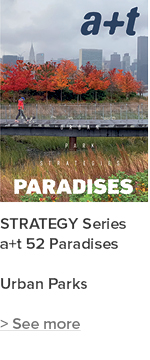
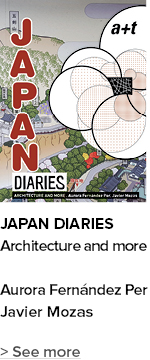
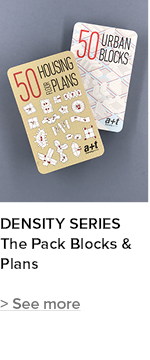

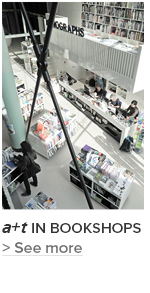
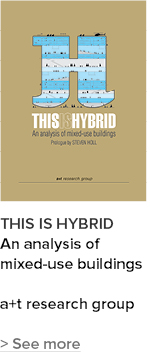
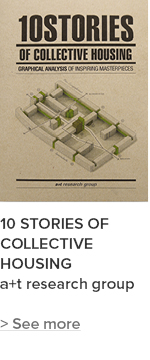
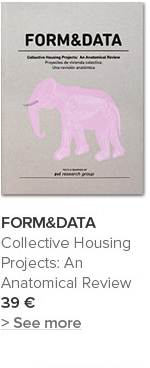
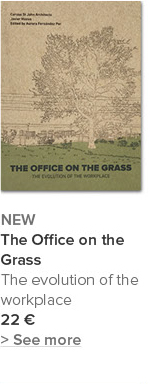
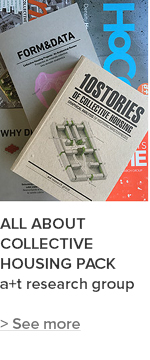
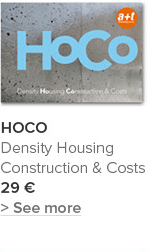
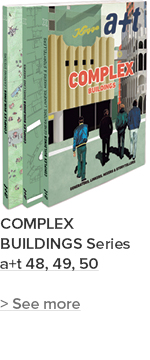
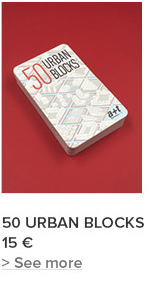
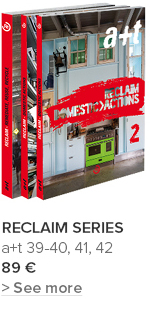
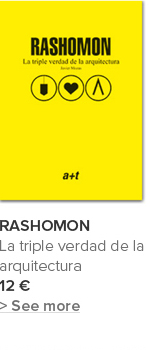
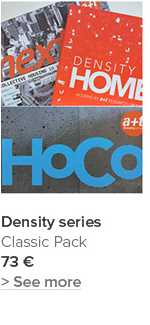

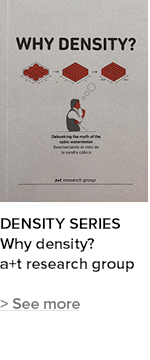



 I've read and agree to
I've read and agree to 


